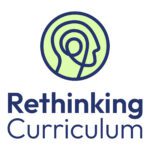Outdoor learning: Exploring the evidence-base

This article has been published as part of the Rethinking Curriculum project, kindly funded by The Helen Hamlyn Trust.
Forest school or curriculum outdoor learning?
Both nature-based outdoor learning, where activities focus on engaging with the natural world (such as forest school, adventurous expeditions and bushcraft) and curriculum-based outdoor learning (such as carrying out your usual traditional lessons but in an outdoor environment), have been shown to have a positive impact on outcomes for students.
A systematic review of 58 outdoor learning studies from the UK found that almost all types of outdoor learning had a positive impact on defined outcomes (Fiennes et al., 2015).
Features of effective outdoor learning
Research in this area is limited and the outcomes measured (e.g. effects on children’s learning, wellbeing and behaviour etc.) vary across studies but in general, research suggests that outdoor learning is more effective when it is sustained/longer term (e.g. a more intensive project lasting several days or a weekly session outdoors throughout the year and there is well-designed preparatory and follow-up work (Fiennes et al., 2015)
Some literature suggests that outdoor learning practitioners should use a theory of change or logic model to outline what they want to achieve from outdoor learning and how activities will create the intended impact (Jucker, 2022).
Other specific aspects of outdoor play and learning which have been reported to lead to positive effects are included below:
- Opportunities for agency and authentic participation in decision making about the local environment (Charles et al. 2018; Chawla, 2009)
- Access to loose parts and natural materials such as sand, water and plants (Brussoni et al., 2017)
- Access to forest settings or ‘greened’ playgrounds (with more shrubs and natural features) (Coe et al.,2014; Pagels et al., 2014; Fjørtoft, 2004; Söderström et al., 2013)
- Student autonomy and choice/Student-led approaches (Dettweiler et al., 2023)
- Opportunities for risky play (Sando et al., 2021; Lavrysen et al., 2017; Brussoni et al.,2015)
Features of effective indoor teaching and learning also hold true for lessons outdoors. Therefore, outdoor learning should be planned, assessed and resourced with equal care and quality as indoor education. Similarly, high-quality teaching is just as important outside as it is indoors.
Impact of outdoor learning
The positive impact of being outdoors in nature is well-established. A growing body of research has evidenced that green outdoor spaces are associated with improved cognition, wellbeing, behaviour and physical health for both children and adults.
The most recent systematic reviews of research conducted with children and adolescents found supporting evidence for:
- Nature exposure promoting positive changes in attention, memory and mood (Norwood et al., 2019)
- Greater exposure to green spaces during childhood being associated with increased physical activity and lower risk of obesity and neurodevelopmental issues (Islam et al., 2020)
- Higher levels of ‘green time’ being associated with favourable psychological outcomes and possibly buffering the negative effects of high ‘screen time’ (Oswald et al., 2020)
- Cognitive benefits of nature interventions (Vella-Brodrick and Gilowska, 2022)
- Measurable socio-emotional, academic and wellbeing benefits associated with nature-specific outdoor learning (Mann et al., 2022)
- Beneficial associations between greenspace exposure and children’s behaviour (Zare Sakhvidi et al., 2022).
It is also known that despite spending less time outdoors than previous generations (Natural England, 2009), children enjoy being outside and want to spend more time outdoors (Thomas and Thompson, 2004; Natural England, 2023).
Less is known, however, about the specific impact of outdoor learning in schools and which features are most important. This has been problematic for researchers as approaches to outdoor learning vary from immersive residential experiences and nature-based programmes such as forest school, to everyday curriculum learning that takes place on urban school grounds. These differences make it difficult to compare and collate results across multiple studies and very little research has directly compared different approaches or controlled variables so that specific aspects of outdoor learning can be studied (for example, the impact of a nature-rich environment vs the impact of forest school pedagogy).
Despite programmes such as forest school expanding rapidly, there is a relatively small body of research on its impact (Garden and Downes, 2021). Many studies lack control groups, are based on small samples and rely on solely qualitative data (Goldenberg, 2022). A meta study on the effectiveness of outdoor learning found that only 13 studies out of almost 8000 met the standards for reasonable methodological rigour (Becker et al., 2017).
However, in recent years there has been an increase in more robust studies which suggest promising effects of learning outdoors. They show that teaching outdoors is often more effective than traditional instruction and that nature-based learning shows a dose-response relationship. Positive effects of outdoor learning have held true across different topics, learners, pedagogies, teacher and research designs (Kuo et al., 2022).
One study found that following outdoor learning sessions, children were more focussed and on task during their subsequent indoor lessons, requiring almost half the number of teacher redirects (Kuo, Browning and Penner, 2018). Other studies have given students attention tests both in their usual classroom and outdoors, and found that they performed better when outside in nature (Margerita, 2015; Mason et al., 2022; Mancuso et al., 2006). However, not all studies replicated these findings (Anabitarte et al., 2022).
Other research suggested that spending a day each week doing curriculum learning outdoors led to lower levels of stress and better stress regulation, as measured by brain imaging and levels of cortisol (stress hormone) in students’ saliva (Dettweiler et al 2017; 2023).
A longitudinal study of preschoolers (Ulset et al., 2017) found that the more time children spent outdoors, the better they performed on tests of memory and attention and the lower the odds of displaying inattention and hyperactivity as they progressed through their school years. A follow up study found that even 10 years later, children who had spent more time outside in early childhood had better attentional control and academic results as teenagers (Ulset et al, 2023).
It is not yet known which aspects of outdoor learning are most important for positive effects, for example, is it increased physical activity or more hands-on learning outdoors which benefits students? Is it a child-led approach or the presence of nature? It is likely to be a combination of several factors which interrelate. However, a systematic review found that almost all outdoor learning had a positive impact on defined outcomes, particularly when activities were longer term and included good preparation and follow up (Fiennes et al., 2015).
Taking this forward
The following practical advice for teachers and school leaders is based on the literature review and best practice guide provided, as well as the latest research in the field.
Research suggests that many children are losing their connection to the natural world, and that outside of school, disadvantaged children are less likely to visit nature sites than their peers (Shanahan et al, 2015; Hunt et al, 2016). However, nature is also thought to potentially have equigenic effects – narrowing the gap between more and less disadvantaged groups (Jordan, 2020). Schools are well positioned for providing a universal access point for nature, enabling equality of access for all children and reducing health and academic disparities. Consider how you might be able to provide this access for children at your setting. This might include:
- adding more natural features to your school playground e.g. plants, trees and grass
- making better use of local nature spots such as parks, fields and forests
- using natural features indoors such as plants, nature slideshows and nature soundscapes.
Consider how you can increase the amount of time that children spend outside. In addition to the reported health and academic benefits, 87% of children say that being outside makes them very happy (Natural England, 2023). You might increase outdoor access by:
- doing everyday activities outdoors, such as independent reading, story time or circle time
- teaching curriculum lessons outdoors
- building additional outdoor breaks into the school day to improve focus, behaviour and self regulation
- using outdoor time as an intervention to support individual children who are struggling indoors
- creating opportunities for children to have autonomy over whether they carry out an activity outdoors or inside.
Both learning and play sessions have been shown to be quieter outdoors, even when the same activities are carried out across both settings (Goldenberg et al, 2024). Therefore, if you are struggling with noisy classroom conditions, consider carrying out some activities outdoors, or using outdoor time as a ‘noise detox’.
Experiment with time outdoors and observe the effects, does the class as a whole seem to benefit? Do some children benefit more than others? Some possible enquiries you could explore include:
- Are students more focussed and on task following a period of outdoor time?
- Do dysregulated students calm down quicker when allowed to access the outdoors?
- Does taking curriculum lessons outdoors make them more enjoyable? Quieter? More productive?
- Does outdoor time support children’s mental health? What questions could you ask them about how they feel when outdoors vs inside?
- Does the opportunity to read outdoors increase engagement in reading?
Glossary
- Dose-response relationship: When the magnitude of treatment (the dose) increases, so does the outcome. In this case, the more time students spend learning outdoors, the greater the positive effect.
- Longitudinal study: A study which follows the same participants over an extended period of time and repeats measures to track long term changes in variables.
- Methodological rigour: The precision and strength of a study in terms of its design, planning, data collection and analysis.
- Systematic review: A study of studies, which pulls together the findings from multiple studies on the same subject, critically appraises them and synthesises their findings.
Finding out more
Free downloadable book (open access) about evidence based education outside the classroom: High-Quality Outdoor Learning: Evidence-based Education Outside the Classroom for Children, Teachers and Society
References
Becker C, Lauterbach G and Spengler S et al. (2017) Effects of regular classes in outdoor education settings: A systematic review on students’ learning, social and health dimensions. International Journal of Environmental Research and Public Health 14(5): 1–20.
Brussoni M, Gibbons R, Gray C, Ishikawa T, et al. (2015) What is the relationship between risky outdoor play and health in children? A systematic review. International Journal of Environmental Research and Public Health 12(6): 6423-6454.
Brussoni M, Ishikawa T, Brunelle S and Herrington S (2017) Landscapes for play: Effects of an intervention to promote nature-based risky play in early childhood centres. Journal of Environmental Psychology 54 (September 2018): 139–150.
Charles C, Louv R and Bodner L et al. (2018) Home to Us All: How Connecting With Nature Helps Us Care for Ourselves and the Earth. Minneapolis: Children and Nature Network.
Chawla L (2009) Growing up green: Becoming an agent of care for the natural world. Journal of Developmental Processes 4(1): 6–23.
Coe DP, Flynn JI, Wolff DL et al. (2014) Children’s physical activity levels and utilization of a traditional versus natural playground. Children Youth and Environments 24(3): 1-15.
Dettweiler U, Becker C and Auestad BH et al. (2017) Stress in school. Some empirical hints on the circadian cortisol rhythm of children in outdoor and indoor classes. International Journal of Environmental Research and Public Health 14(5).
Dettweiler U, Gerchen M and Mall C et al. (2023) Choice matters: Pupils’ stress regulation, brain development and brain function in an outdoor education project. British Journal of Educational Psychology 93: 152-173.
Fiennes C, Dickson K, de Escobar DA and Romans A (2015) The existing evidence-base about the effectiveness of outdoor learning. Available at: https://www.sapoe.org.uk/wp-content/uploads/2017/08/outdoor-learning-giving-evidence-revised-final-report-nov-2015-etc-v21.pdf (accessed 16 June 2014).
Fjørtoft I (2004) Landscape as playscape: The effects of natural environments on children’s play and motor development. Children Youth and Environments 14(2): 21-44.
Garden A and Downes G (2021) A systematic review of forest schools literature in England. Education 3-13: 1-17.
Goldenberg G (2022) Forest school: An approach in itself or outdoor learning? Early Years Educator 23(16).
Goldenberg, G., Atkinson, M., Dubiel, J., & Wass, S. (2024). Outdoor learning in urban schools: Effects on 4–5 year old children’s noise and physiological stress. Journal of Environmental Psychology, 97, 102362.
Hunt, A., Stewart, D., Burt, J., & Dillon, J. (2016). Monitor of Engagement with the Natural Environment: a pilot to develop an indicator of visits to the natural environment by children – Results from years 1 and 2 (March 2013 to February 2015). In Natural England Commissioned Reports (Number 208) (Vol. 2, Issue February 2015).
Islam MZ, Johnston J and Sly PD (2020) Green space and early childhood development: A systematic review. Reviews on Environmental Health 35(2): 189–200. https://doi.org/10.1515/reveh-2019-0046
Jordan, C. (2020). The Equigenic Effect: How Nature Access Can Level the Playing Field for Children The Children and Nature Network accessed online 5 August 2024 at https://www.childrenandnature.org/resources/the-equigenic-effect-how-nature-access-can-level-the-playing-field-for-children/
Jucker R and von Au J (2022). High-Quality Outdoor Learning: Evidence-Based Education Outside the Classroom for Children, Teachers and Society. Springer Nature.
Kuo M, Barnes M and Jordan C (2022) Do experiences with nature promote learning? Converging evidence of a cause-and-effect relationship. In: High-Quality Outdoor Learning Springer, Cham, pp. 47-66.
Kuo M, Browning MHEM and Penner ML (2018) Do lessons in nature boost subsequent classroom engagement? Refueling students in flight. Frontiers in Psychology 8(JAN): 1–15.
Lavrysen A, Bertrands E, Leyssen L, et al. (2017) Risky-Play at School: Facilitating Risk Perception and Competence in Young Children. European Early Childhood Education Research Journal 25(1): 89–105.
Mancuso S, Rizzitelli S and Azzarello E (2006) Influence of green vegetation on children’s capacity of attention: A case study in Florence, Italy. Advances in Horticultural Science 20(3).
Mann J, Gray T and Truong S et al. (2022) Getting out of the classroom and into nature: A systematic review of nature-specific outdoor learning on school children’s learning and development. Frontiers in Public Health 10: 877058.
Margherita RB (2015) How does psychological restoration work in children? An exploratory study. Journal of Child and Adolescent Behaviour 3(3). https://doi.org/10.4172/2375-4494.1000200
Mason L, Manzione L, Ronconi A and Pazzaglia F (2022) Lessons in a green school environment and in the classroom: Effects on students’ cognitive functioning and affect. International Journal of Environmental Research. 19(24): 16823.
Natural England (2009) Childhood and Nature: A survey on changing relationships with nature across generations. Available at: https://publications.naturalengland.org.uk/publication/5853658314964992 (accessed on 17 July 2024)
Natural England (2023) The Children’s People and Nature Survey for England: 2023 update. Available at: https://www.gov.uk/government/statistics/the-childrens-people-and-nature-survey-for-england-2023-update/the-childrens-people-and-nature-survey-for-england-2023-update (accessed on 17 July 2024)
Norwood MF, Lakhani A and Fullagar S et al. (2019) A narrative and systematic review of the behavioural, cognitive and emotional effects of passive nature exposure on young people: Evidence for prescribing change. Landscape and Urban Planning 189: 71–79.
Oswald TK, Rumbold AR and Kedzior SGE et al. (2020) Psychological impacts of “screen time” and “green time” for children and adolescents: A systematic scoping review. PLoS ONE 15(9). https://doi.org/10.1371/journal.pone.0237725
Pagels P, Raustorp A, De Leon AP et al. (2014) A repeated measurement study investigating the impact of school outdoor environment upon physical activity across ages and seasons in Swedish second, fifth and eighth graders. BMC Public Health 14(1): 803.
Sando OJ, Kleppe R and Sandseter EBH (2021) Risky play and children’s well-being, involvement and physical activity. Child Indicators Research 14(4): 1435-1451.
Söderström M, Boldemann C, Sahlin U et al. (2013) The quality of the outdoor environment influences children’s health – a cross-sectional study of preschools. Acta Paediatrica 102(1): 83-91.
Shanahan, D. F., Fuller, R. A., Bush, R., Lin, B. B., & Gaston, K. J. (2015). The health benefits of urban nature: How much do we need? BioScience, 65(5), 476–485. https://doi.org/10.1093/biosci/biv032
Thomas, G. and Thompson, G. (2004). A Child’s Place: Why the environment matters to children. London: Green Alliance/Demos.
Ulset VS, Borge AIH and Vitaro F et al. (2023) Link of outdoor exposure in daycare with attentional control and academic achievement in adolescence: Examining cognitive and social pathways. Journal of Environmental Psychology 85. https://doi.org/10.1016/j.jenvp.2022.101942
Ulset V, Vitaro F and Brendgen M et al. (2017) Time spent outdoors during preschool: Links with children’s cognitive and behavioral development. Journal of Environmental Psychology 52: 69–80. https://doi.org/10.1016/j.jenvp.2017.05.007
Vella-Brodrick DA and Gilowska K (2022) Effects of nature (greenspace) on cognitive functioning in school children and adolescents: A systematic review. Educational Psychology Review 34(3): 1217–1254. Springer.
Zare Sakhvidi MJ, Knobel P and Bauwelinck M et al. (2022) Greenspace exposure and children behavior: A systematic review. Science of the Total Environment 824: 153608. https://doi.org/10.1016/j.scitotenv.2022.153608











